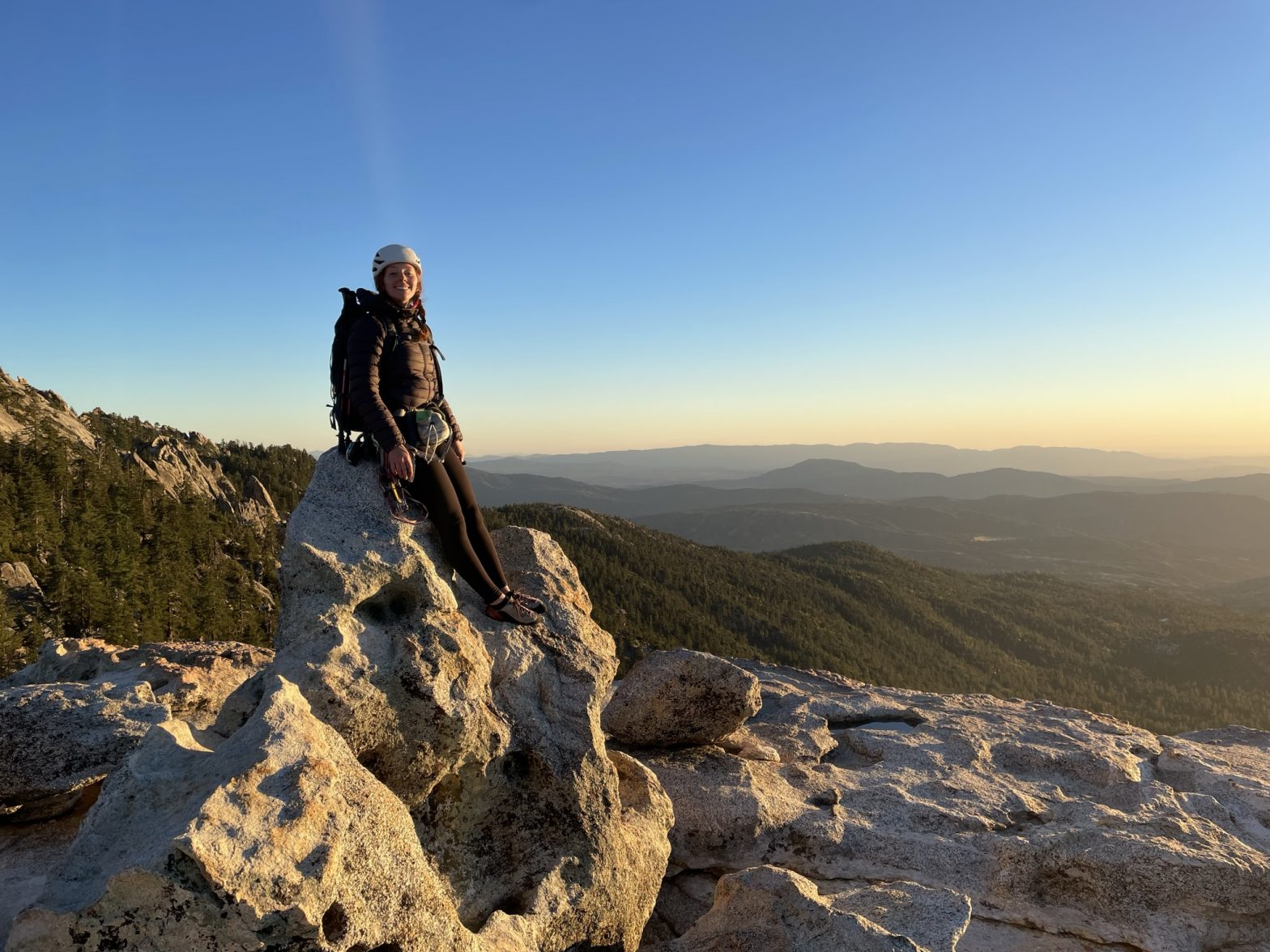
Elevation Gain: 588m
Distance: 9.07km
Total Time: 8 hours 56 minutes
Date: October 24th, 2022
Lily Rock is by no doubt one of the most historically significant summits in North America for climbers and mountaineers alike. It’s origins start back in the 1930’s when a climbing club discovered the area and put up several firsts within the then fledgling climbing community. The Yosemite Decimal System was created by climbers at Lily Rock and some of the countries first 5.8 and 5.9s were put up here and used as benchmarks for all future climbs. From a climber’s perspective Lily Rock offers endless climbing opportunities up its large granite prow. From a summit perspective, it appears to really only be a sub-summit of nearby Tahquitz Peak with easy walk up/off access up the North and South gullies. Despite that, it seems to have official status and with a multitude of climbing options to reach the summit, it could not be passed up.
Andrea and I were making the journey from San Diego to Joshua Tree National Park, but wanted to add in a break a long the way. Thanks to Andrea’s research she had found this historically significant location is a minor detour along the way. There’s no shortage of routes to pick from and we could get a taste of the old school California grades that we had heard so much about. We settled on a popular 5.4 route called White Maidens Walkway. By most accounts the route finding would be challenging, but we armed ourselves with ample topo photos and written descriptions to help out.
We pulled into the nearby town of Idyllwild around 9:30am, but it took awhile to get to the trail head as we had read we needed a permit to climb. As it turned out, a permit was only required for the hiking trails up to Tahquitz Peak, but Lily rock and the associated climber’s trails were not included in that. With that we drove up to the parking area for Humber State Park and geared up for the approach. It was now very clearly late October as the morning air made no effort to strip us of our warmth. We both packed in extra layers and then headed down the Ernie Maxwell trail.
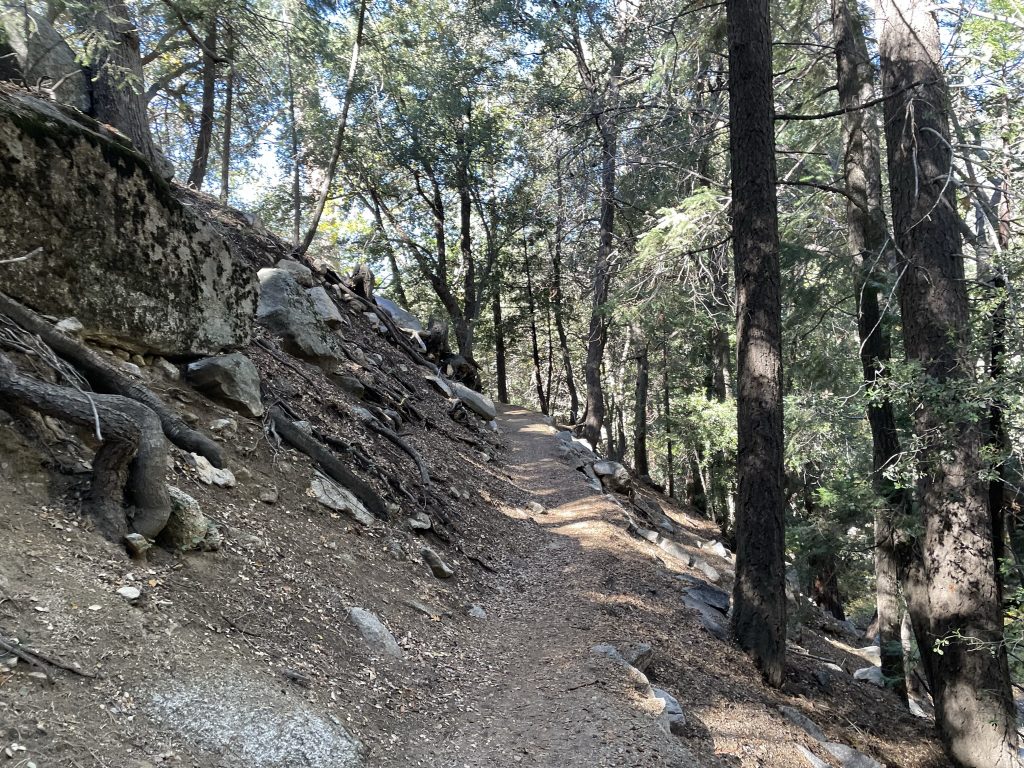
I located the turn off for the climber’s trail and then Andrea lead us up the steepish switchbacks to the base of Lily Rock. The trail spit us out at the base of a short granite formation which appeared to be the Lunchbox Rock we had read about. From here we traversed climber’s left under the formation to locate the start of our route. We made it roughly to where we thought it was located, but from our vantage we couldn’t quite make out the start. After scrambling a short step, I spotted two pairs of climbers and managed to confirm with them that we were at the start of White Maiden’s Walkway. That confirmation also meant we’d need to wait for the other two pairs to finish up their pitches before we started. Oh well, if you pick classic routes during peak times, not much else can be expected.
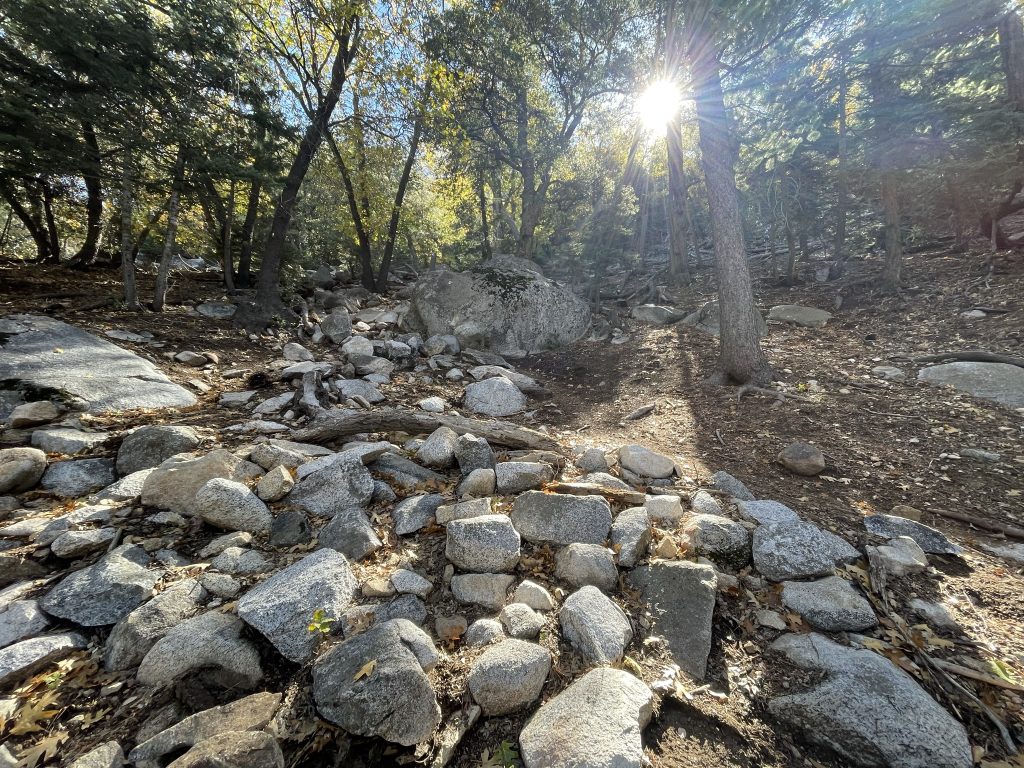
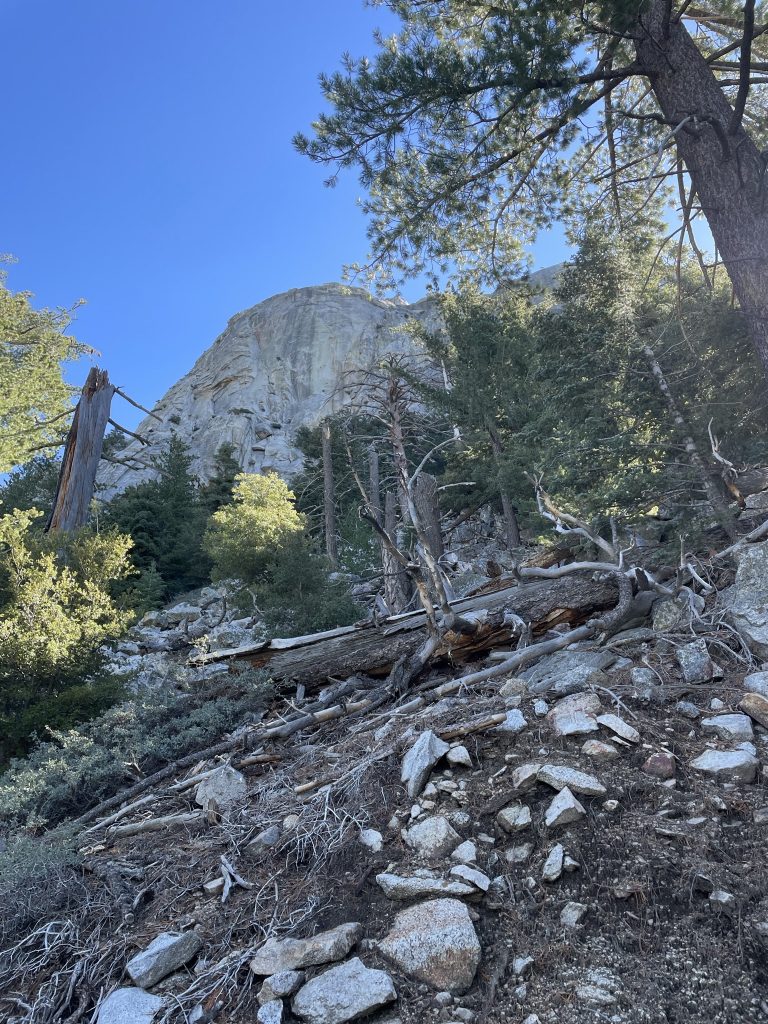
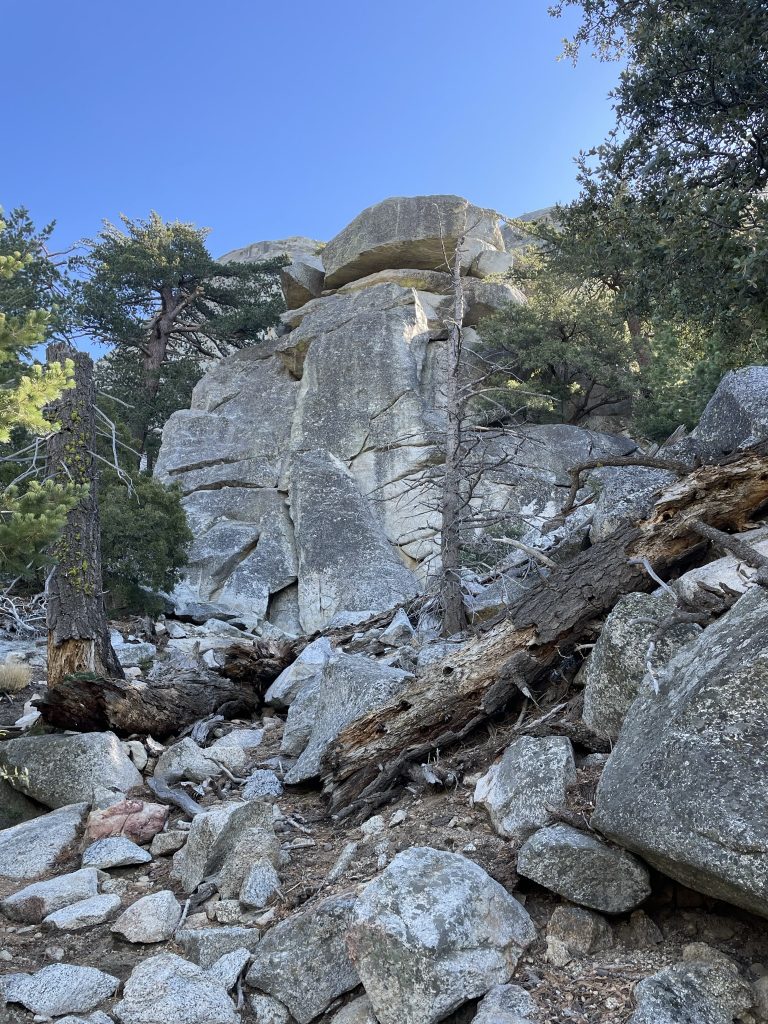
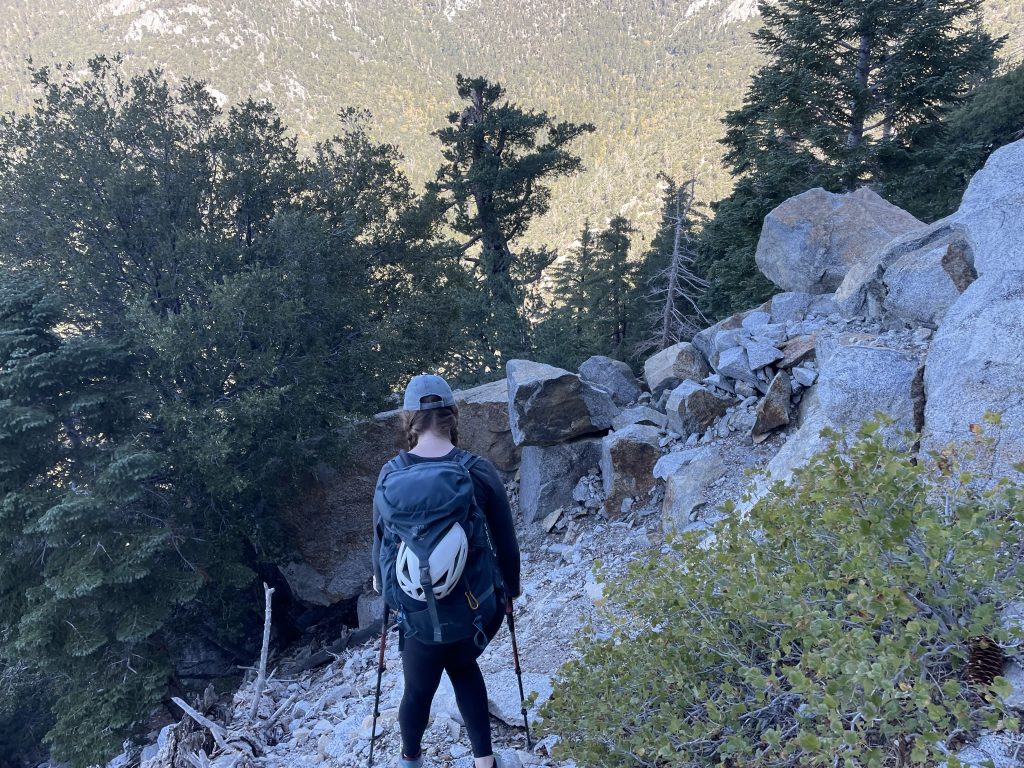
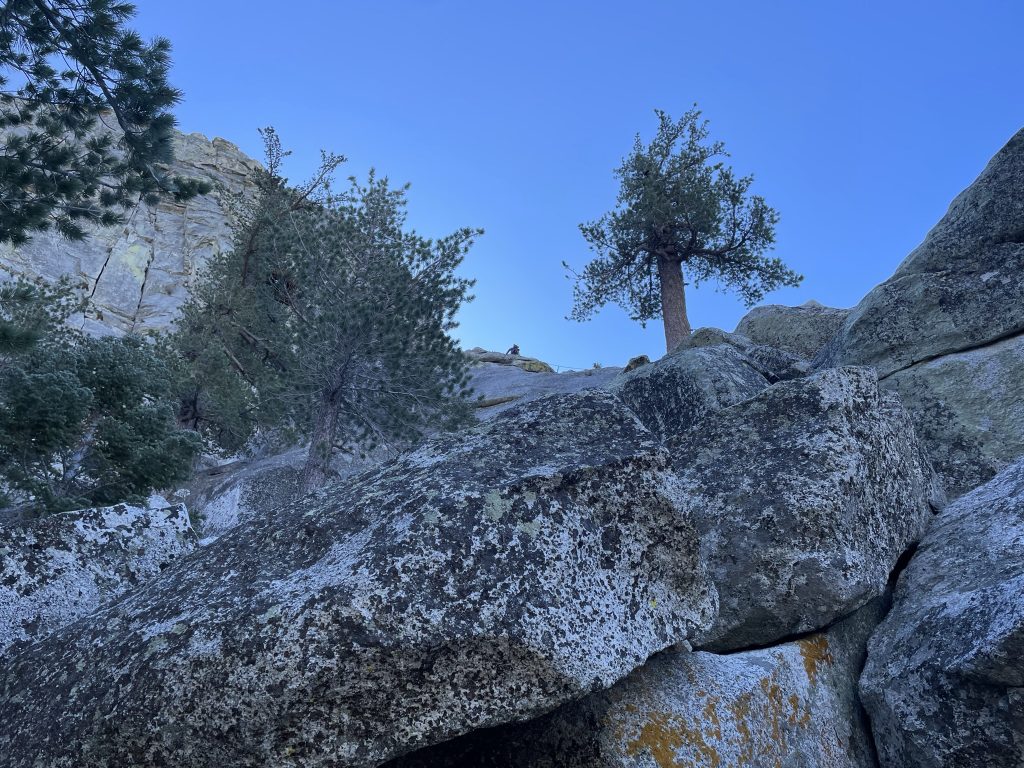
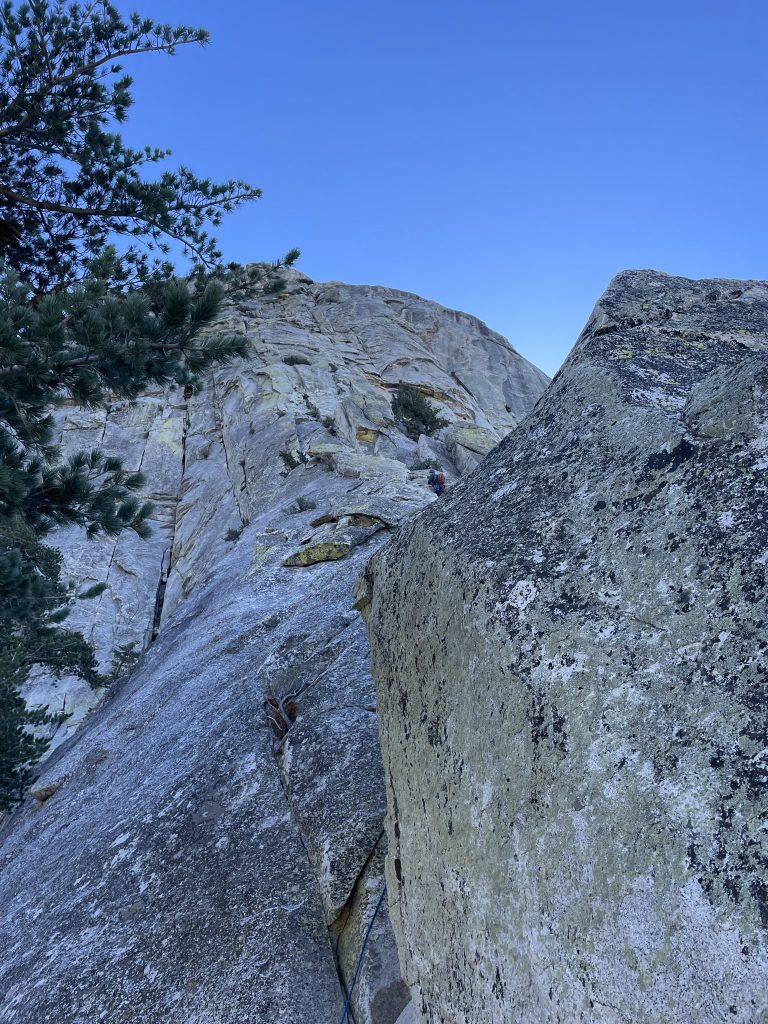
Thankfully the climber at the base, Shannon, was keeping us company while her partner Daniel finished up the lead on pitch one. Once Shannon had followed up, I went on lead. I scrambled up the start and then climbed the low angle ridge towards the top of the first pitch. The climbing was quite easy and I only placed 2 or 3 pieces the entire way. Reaching the anchor area was a bit awkward with a squeeze and traverse past a tree and then a short down climb. Shannon was at the default anchor station, so I had to search around for an adequate gear anchor to belay Andrea up. After a bit of faff, I had one in place and Andrea followed up easily.
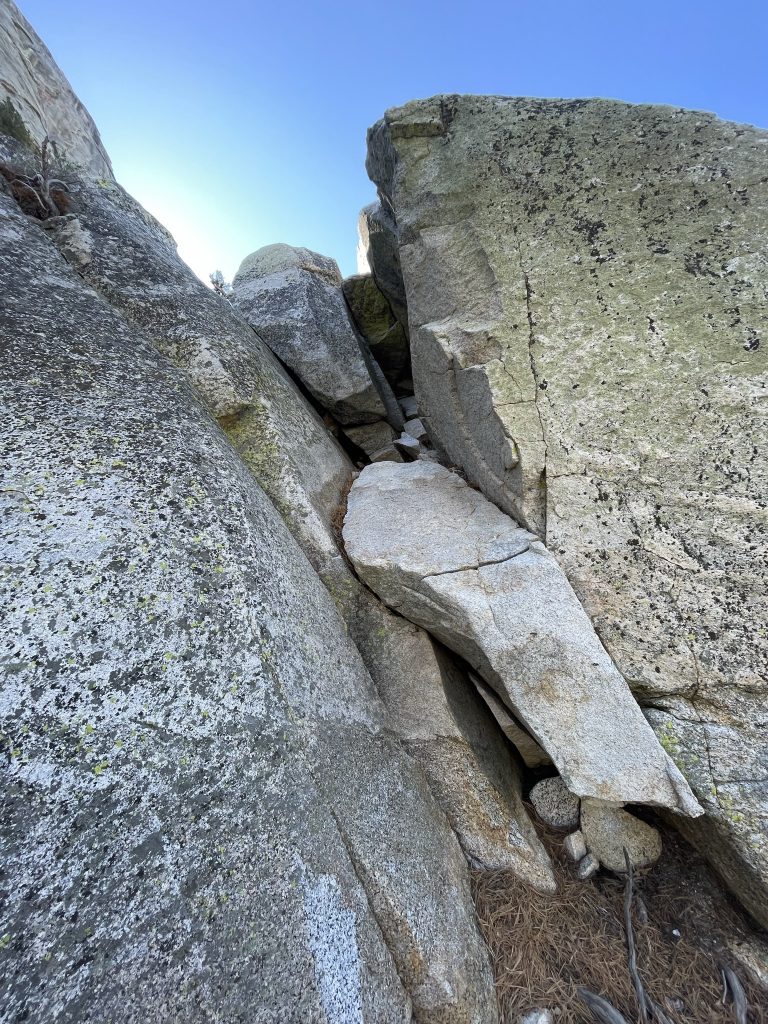
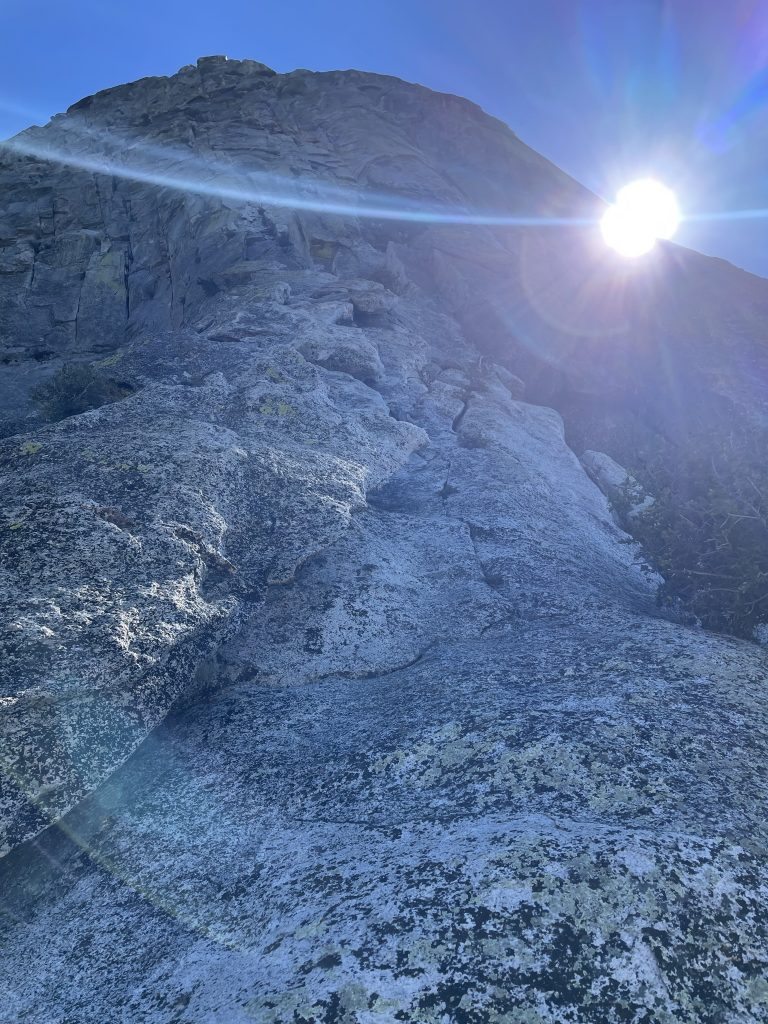
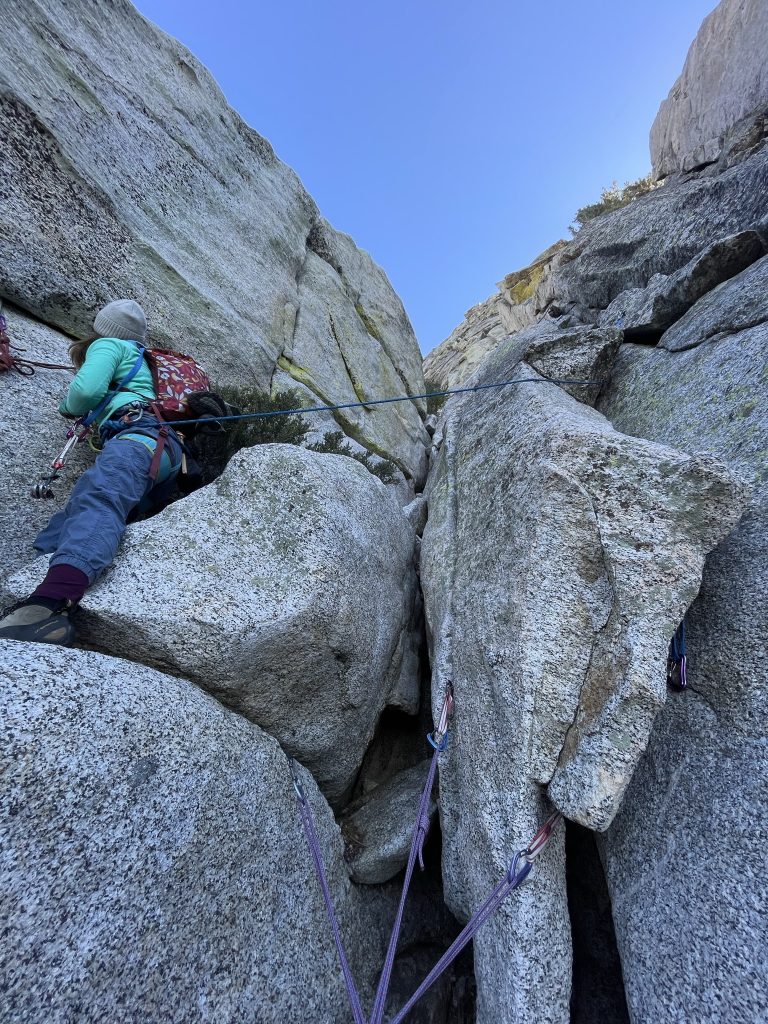
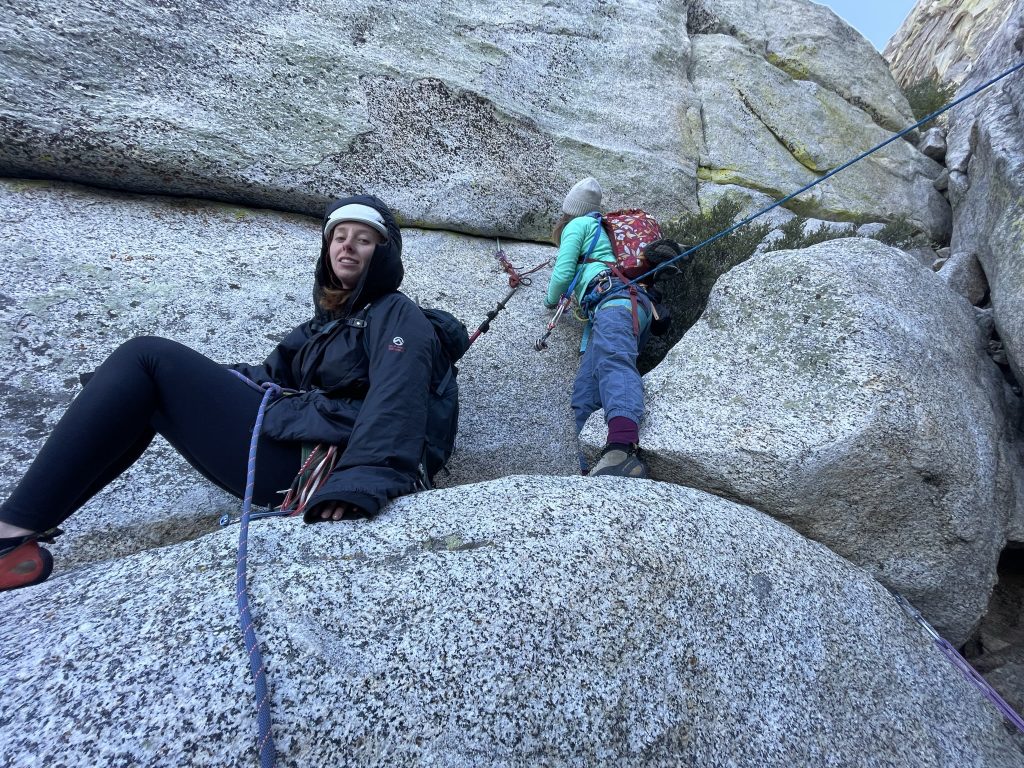
The next pitch looked steeper and more sustained, but from my vantage it seemed straightforward enough. After another 20 minutes Andrea was able to start her lead up. As Andrea put her first few pieces in, the fully shaded belay area started to take its toll on me. Without sunlight the temperatures felt just above freezing and I was starting to get seriously chilled out. There wasn’t much I could do now that I was belaying though, so I did my best to suck it up. Andrea found out half way up that the 5.4 grade was getting stiff and the climbing tricky. She had to think more carefully about the sequence of moves as the pro was getting thinned out near the top. With some well coordinated moves she pulled the last tricky section and let out some sighs of relief before disappearing around a large block.
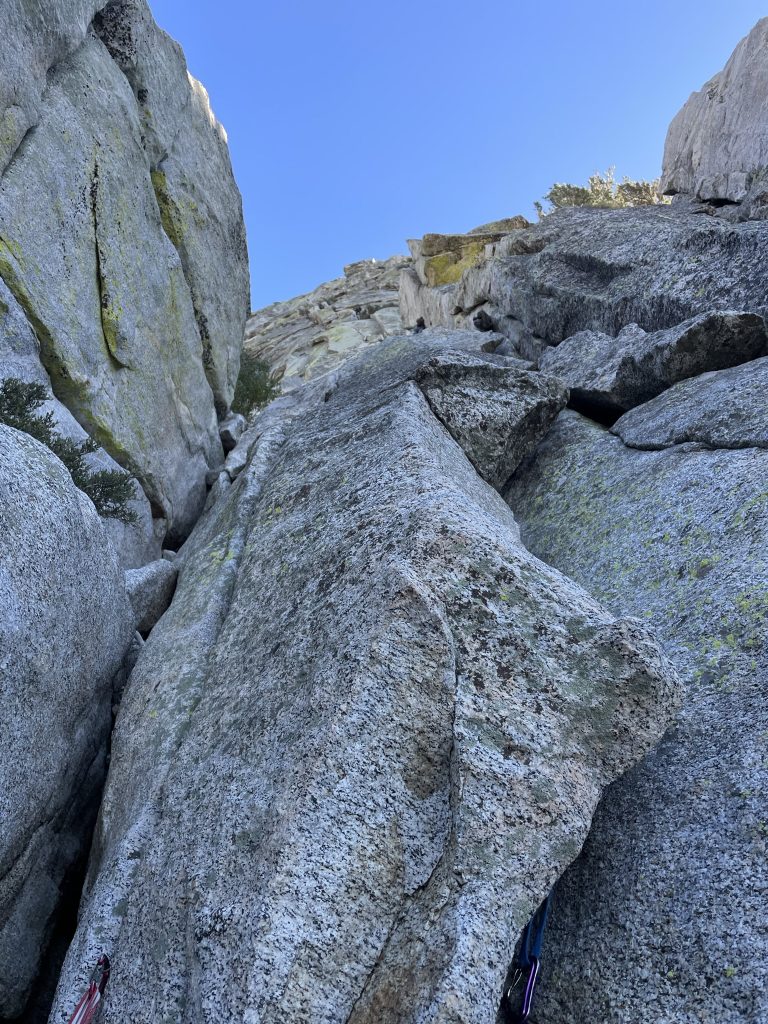
I didn’t hear anything for quite awhile, but eventually Andrea called out that she had set up a gear anchor and I could climb. By now I had been sitting, without moving, for over an hour and twenty minutes. I was positively frozen and getting prepared to bail us off of pitch two as we weren’t going to have enough time at this rate. I gathered my frigid limbs together and forced them up the wall in an effort to warm up. My movement felt stiff and muted but I managed to pull through the moves without consequence. Finally as I rounded the pitch above the large block, the sun graced me with a few delightful beams of warmth. I reached Andrea at last and started to thaw out.
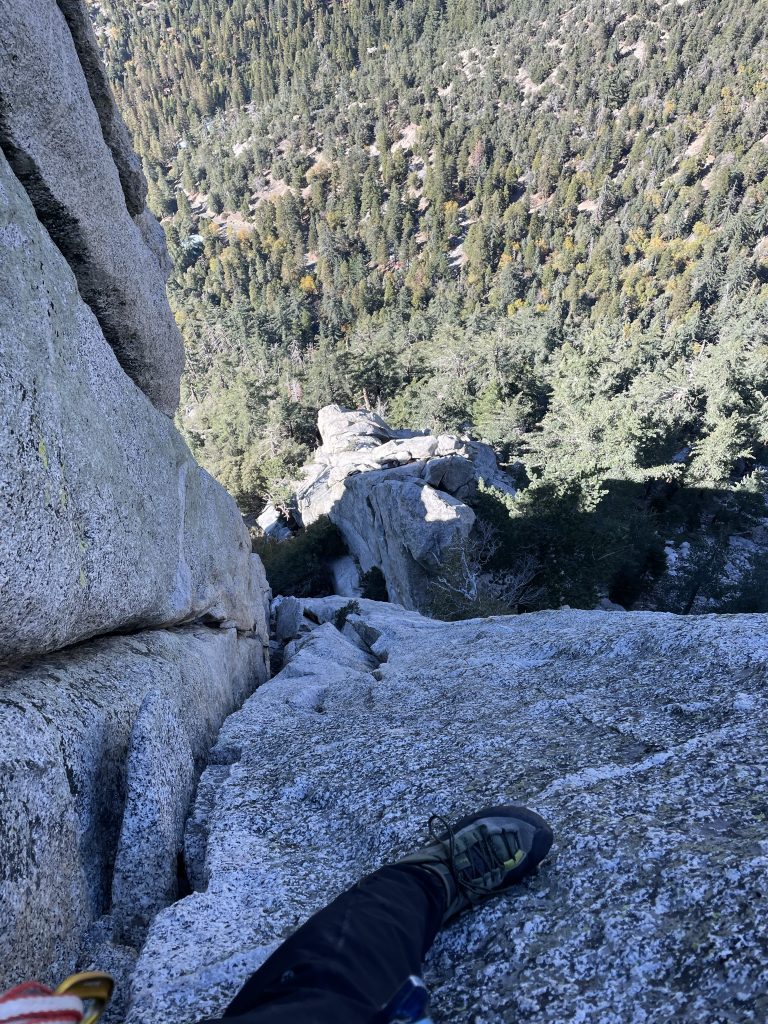
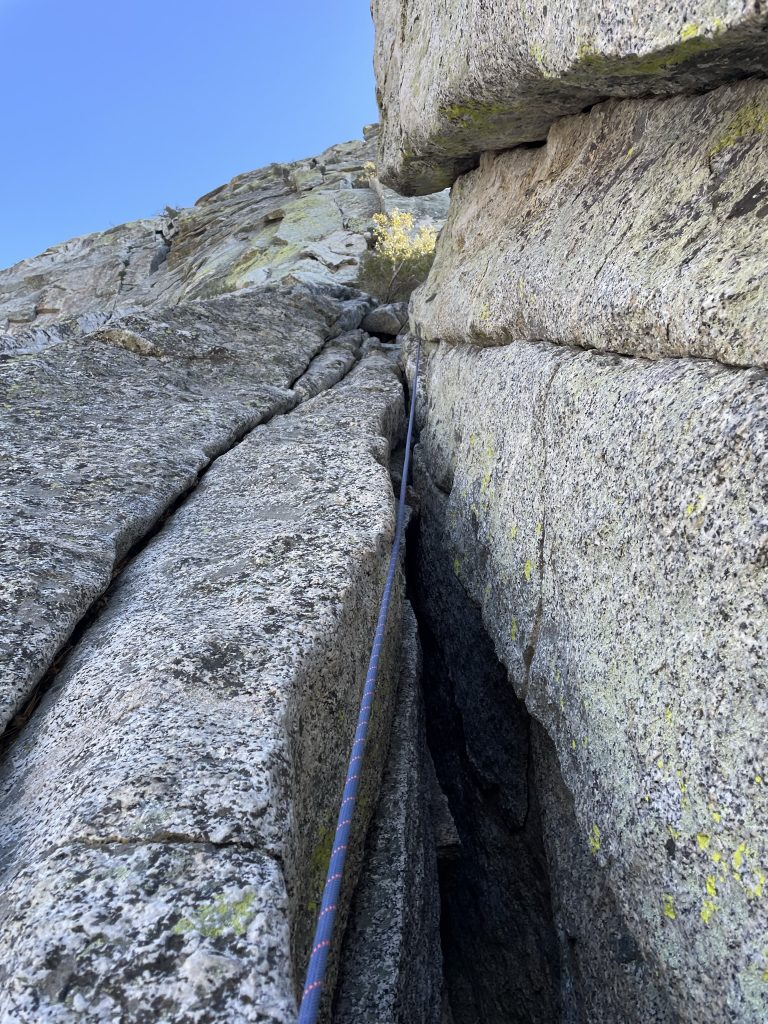
I mentioned bailing, but Andrea was positive we’d have enough time. With my morale recuperating under the sun, I was ready to commit as well so we went about setting up for pitch three. This pitch was a short one and I could see Shannon belaying Daniel perhaps only 20 meters above us. I climbed up a short section of fractured slab and then stopped to place a #0.75 in a bomber looking crack. The piece didn’t fit quite right, so I went to pull it, but my brain misfired and pushed my hand and the piece further into the crack… Now fully cammed and completely jammed. I wriggled as much as I could but it wouldn’t come out. Fiddling with pieces on lead is never ideal, so Andrea called out that she’d retrieve it for me on second. With that, I climbed up the rest of the slab and into a steep alcove of sorts. I traversed right and around the featureless wall below the “belay tree” and then climbed up beside it where Shannon was belaying.
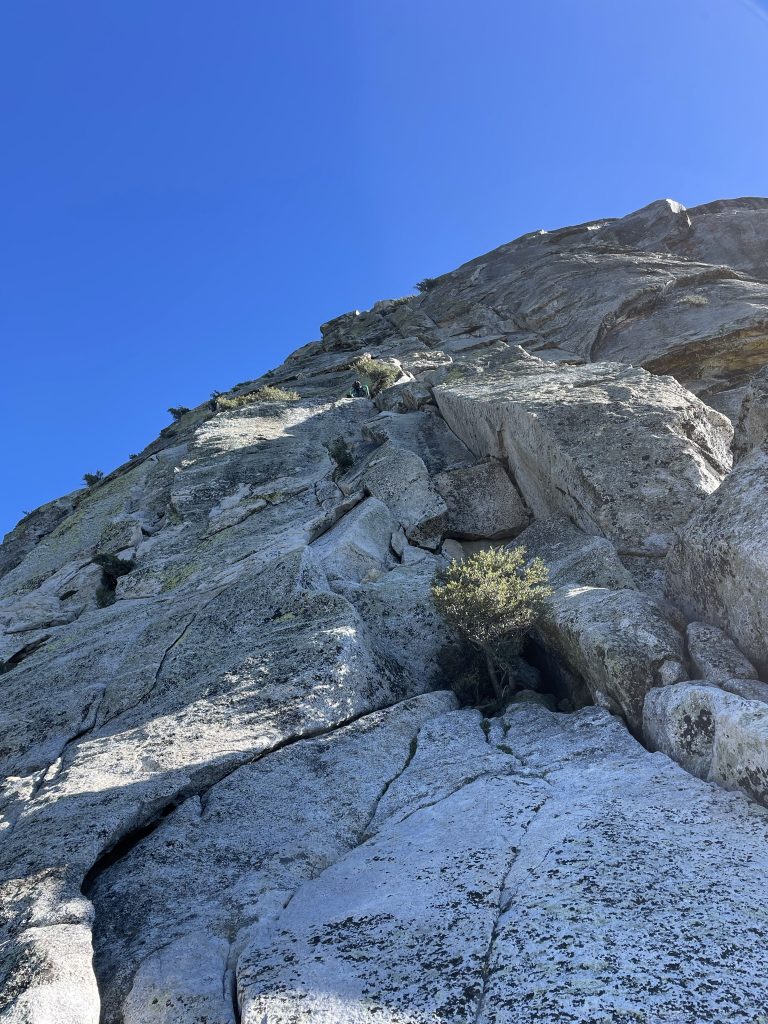
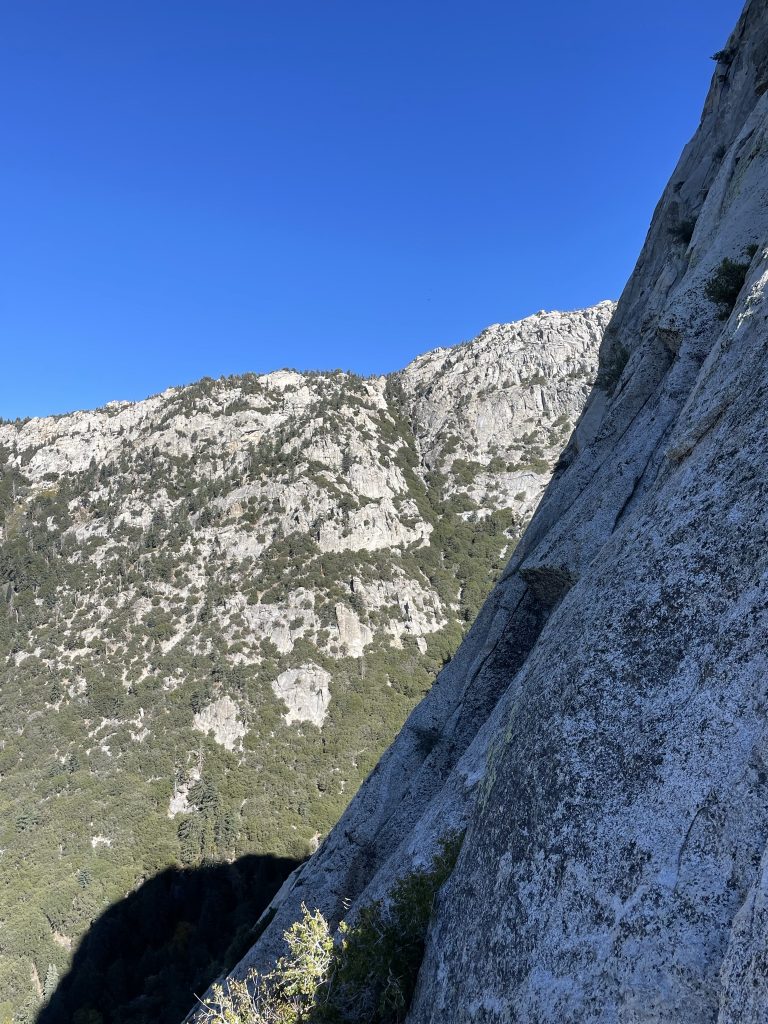
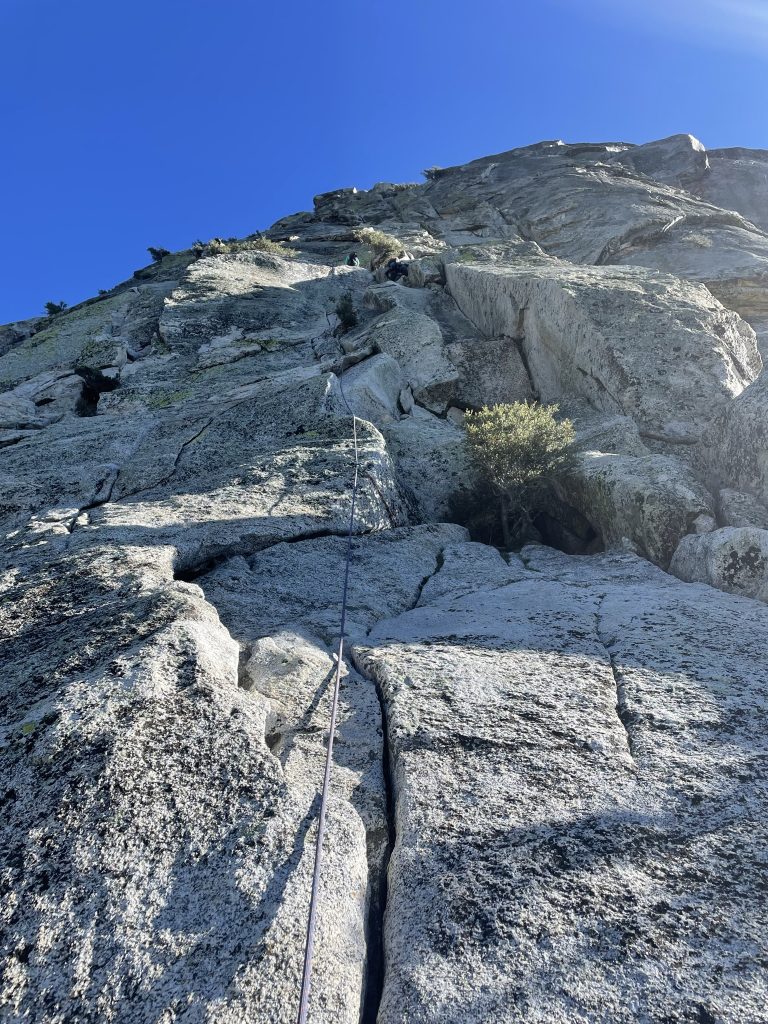
At the belay area I could see the awkward dance that was about to unfold. The belay tree was occupied and while Shannon offered me a spot to tie in, it was also really far from the start of pitch four. Underneath pitch four was another tree and I decided early on that would be a better belay station. To reach it, I had to navigate underneath Shannon and Daniel’s rope while battling my own rope drag caused by the tree. Then, I’d need to pull up an unprotected, but moderate slab section to reach the tree I wanted to belay from. In the process of pulling the moves up the slab, I somehow leaned into Shannon’s rope unclipping my ATC and causing it to release from my harness and down the pitch below. By some dumb luck the ATC landed right at Andrea’s feet after making a few detouring hops down the wall.
Great, the ATC was rescued, but now how to belay Andrea up? I debated a munter hitch setup, but Shannon graciously offered her spare belay device to me. It didn’t have a guide mode, so I had to myself into the tree and then setup a separate anchor above me to belay Andrea in a top rope mode. It wasn’t ideal, but it worked. Shannon seconded up her route shortly after and then Andrea was ready to make her way up as well. Andrea worked hard for at least 10 minutes, but the effort paid off and she managed to free the #0.75 from the rock’s grip. With that whole ordeal out of the way, Andrea climbed the rest of the pitch and met me at the tree.
Now for pitch 4 and Andrea’s turn to lead. She pulled a few interesting stemming sequences up an arete and then face climbed out of sight. I didn’t hear back for awhile, but the warm sun was keeping me company so I was happy to hang out. Once I heard the secure call from Andrea, I got about cleaning things up and starting the climb. The arete proved to be quite interesting and fun, with some solid holds hidden behind a flaring crack system. I then followed the rope up the face before traversing left to an exposed corner. The moves to get into the corner appeared really committing and I was stoked that Andrea had been able to pull them on lead. Andrea provided a key piece of beta (downclimb a meter) and then I was able to find the sequence to get to the bomber holds in the corner. From here it was easy climbing up to Andrea.
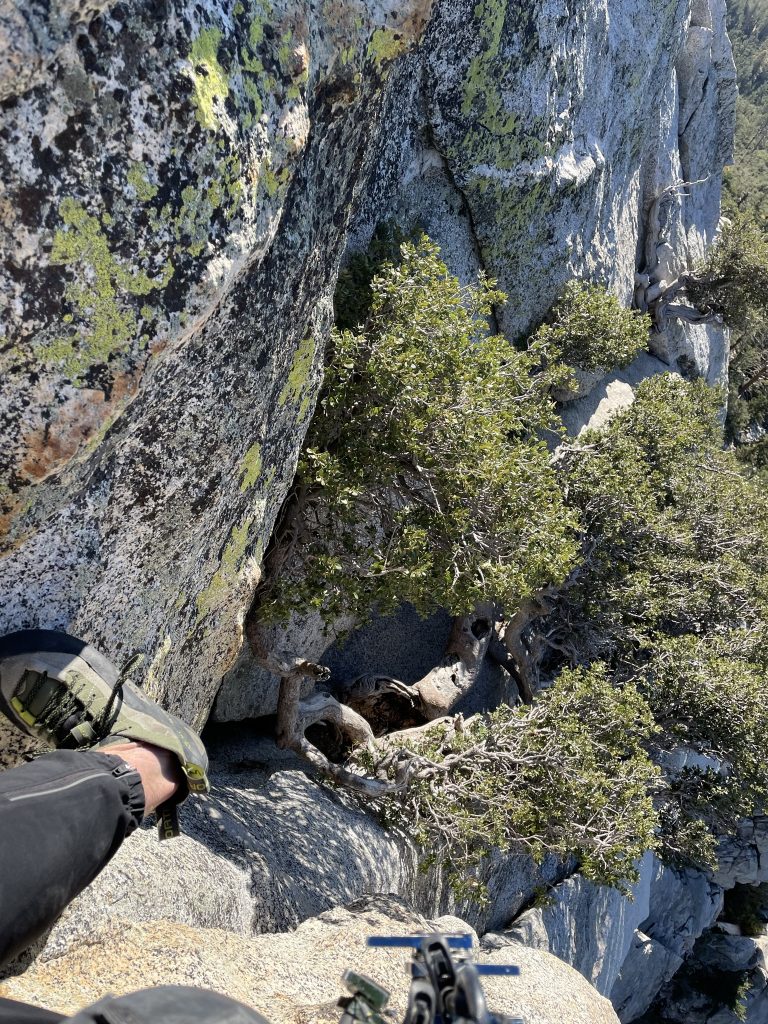
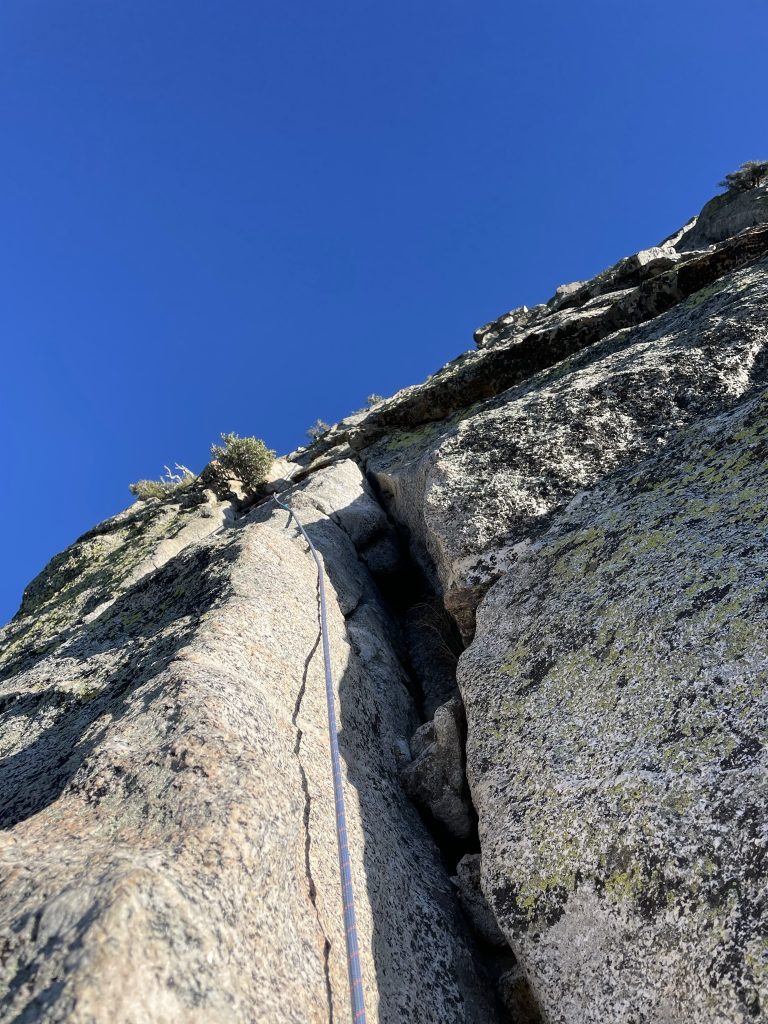
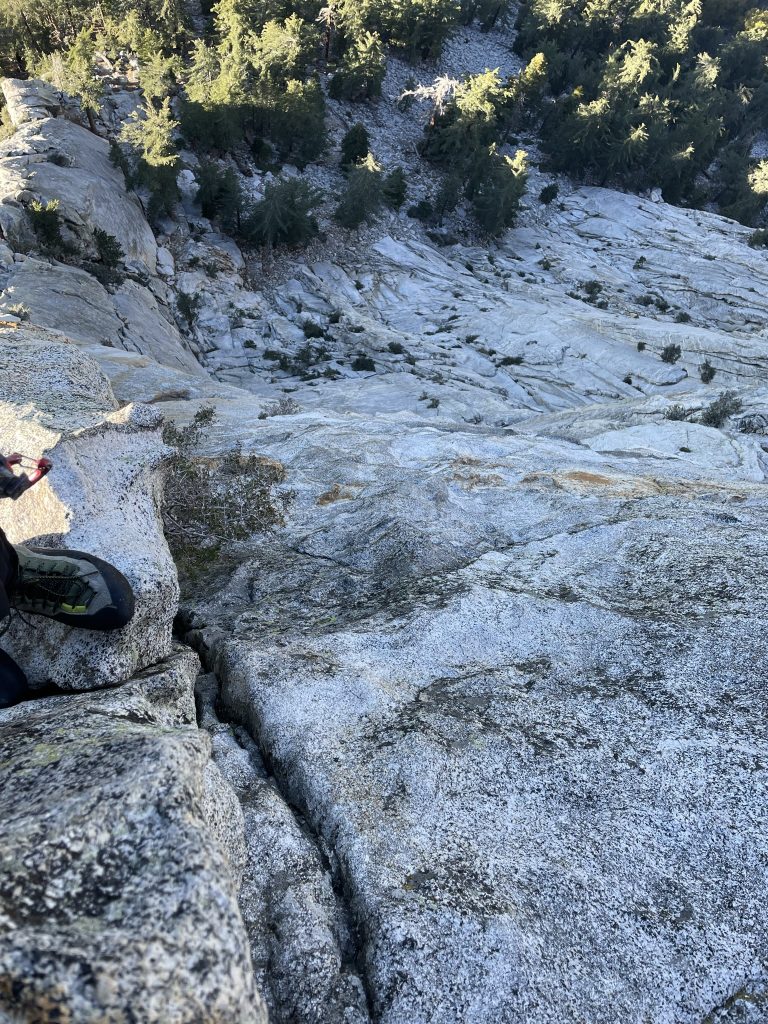
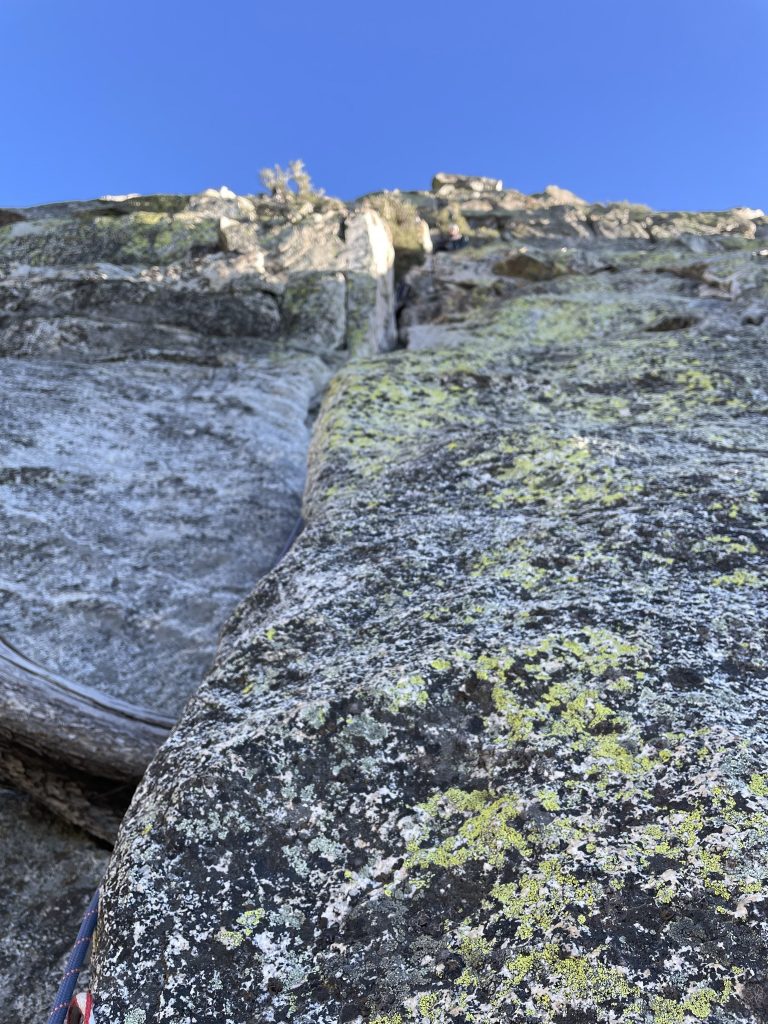
The next pitch was a bit of a confusing one. The topo indicated a traverse of sorts, but as usual we couldn’t quite see at what point that was supposed to happen from our station. Eventually we identified a landmark tree that appeared to match the topo and so I started the lead up aiming for that. The first section was a steep chimney of sorts, with bomber holds and I only placed one piece with a fully extended draw in the hopes of dissuading the rope from dragging. Above the chimney was a ledge system with a multitude of options. I actually couldn’t tell where the next belay area was and it was only by luck that I spotted the pair above us as they were just leaving. It still wasn’t clear how to reach the area they were at however.
First, I traversed climbers right all the way across the ledge, but found the route closed out into stiffer climbing. I back tracked and went above a short tree, but found nothing. Finally, I went further left than the tree and found a channel with a fork. At climber’s left was a beautiful double crack system and I couldn’t resist hand jamming to the top. Unfortunately, it tapered out to a very awkward steep slab traverse and I didn’t like the look of it. I down climbed this section and tried the right fork which finally netted me a ledge system to the next belay station. I belayed Andrea up and now were at the final pitch. Andrea very kindly offered me the last pitch, as all of my pitches had basically been scramble-y wandering routes or simply too short to enjoy.
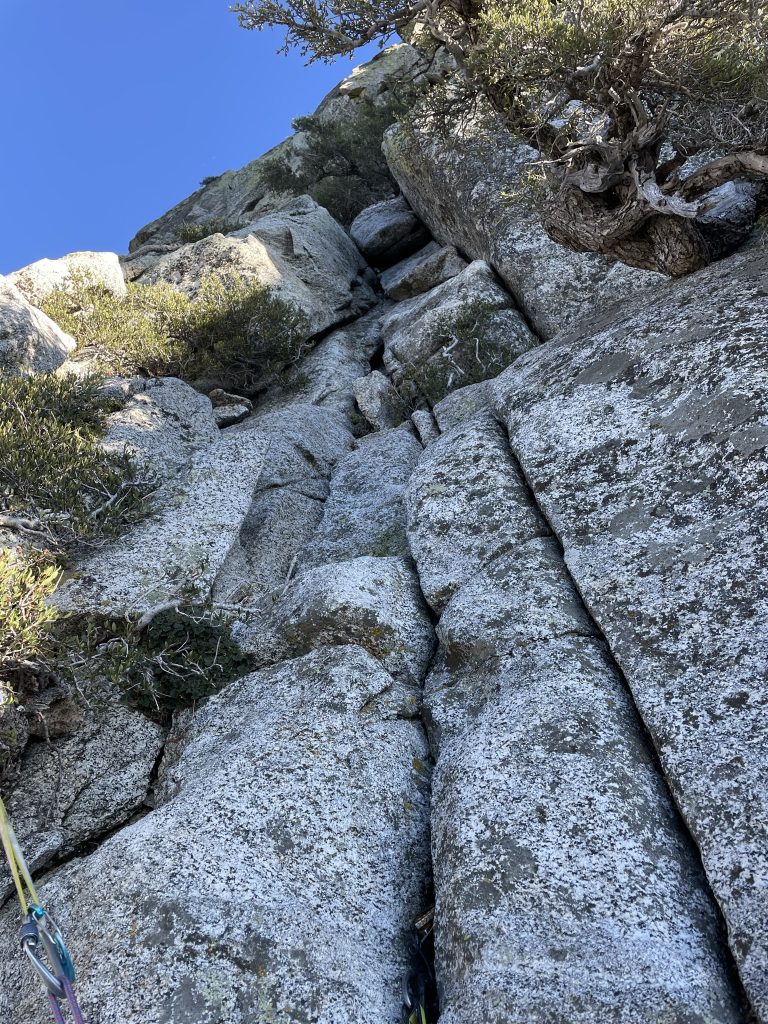
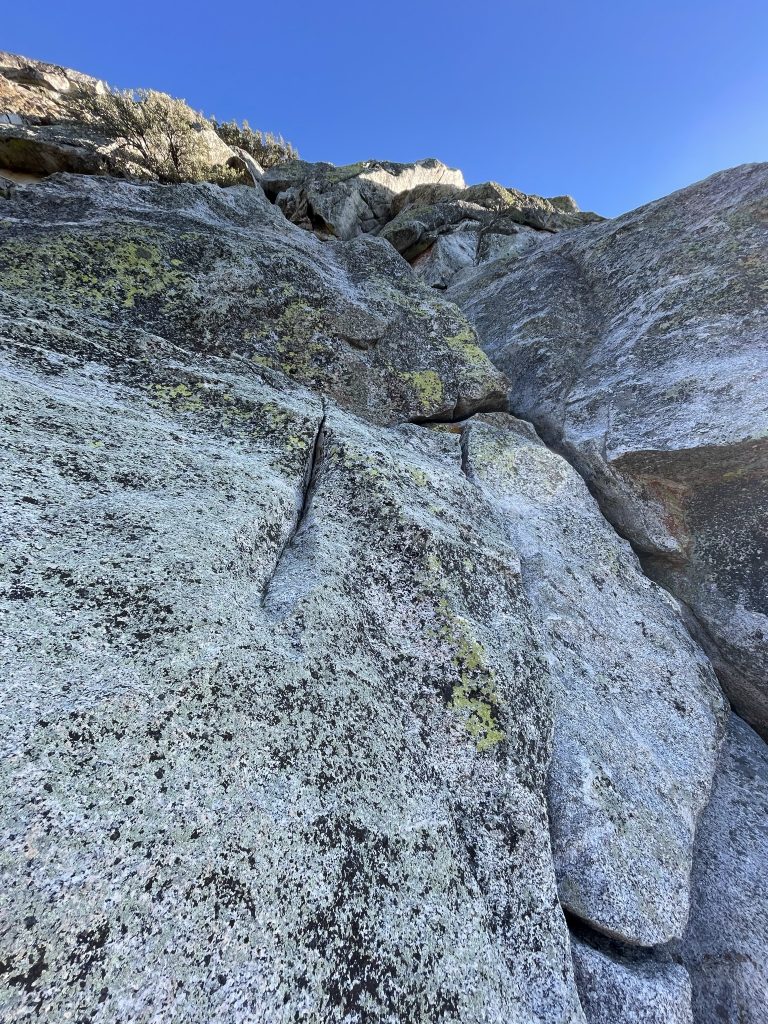
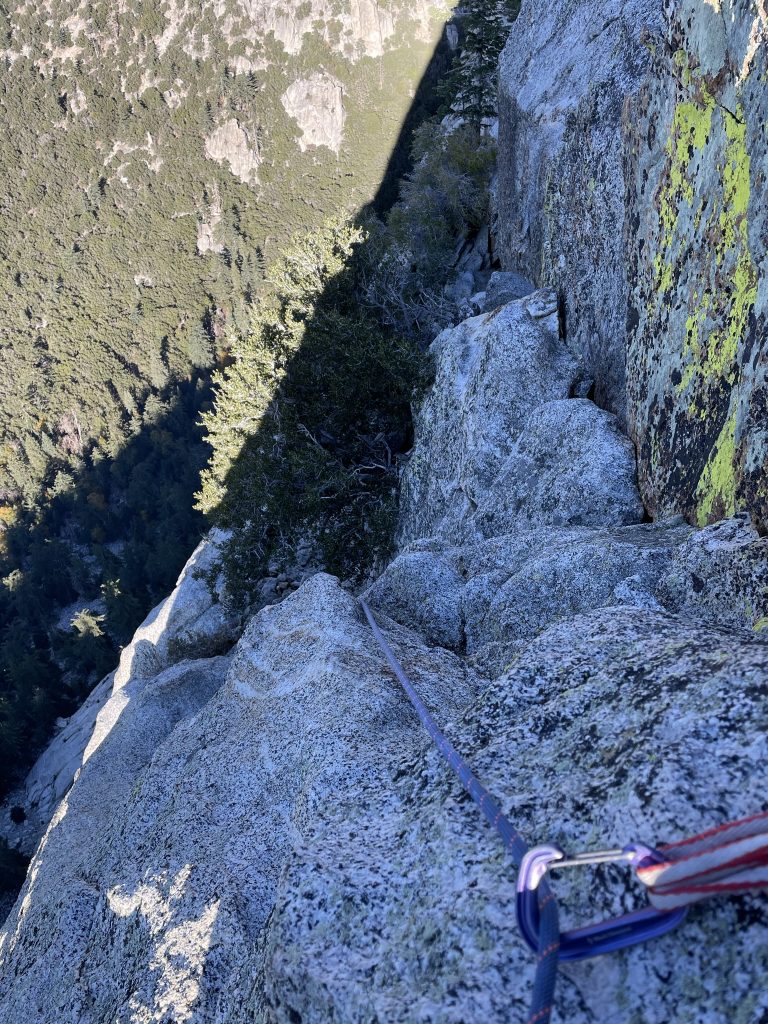
The final pitch had three options. All the way to the right was a 5.1 variation which was just a ledge traverse. At middle was the original 5.3 route with a funner finger traverse on steeper slab and finally directly above was a 5.7 variation. The 5.7 route looked like a chimney jammed up with fractured rock and was not particularly inspiring. So the 5.3 variation it was. I climbed up a short unprotected crack before reaching the over hanging roof above the finger traverse. Here I found my first good piece and then made the fun traverse around the roof. I placed one more cam and then mantled up a bulge and up to the end of pitch six.
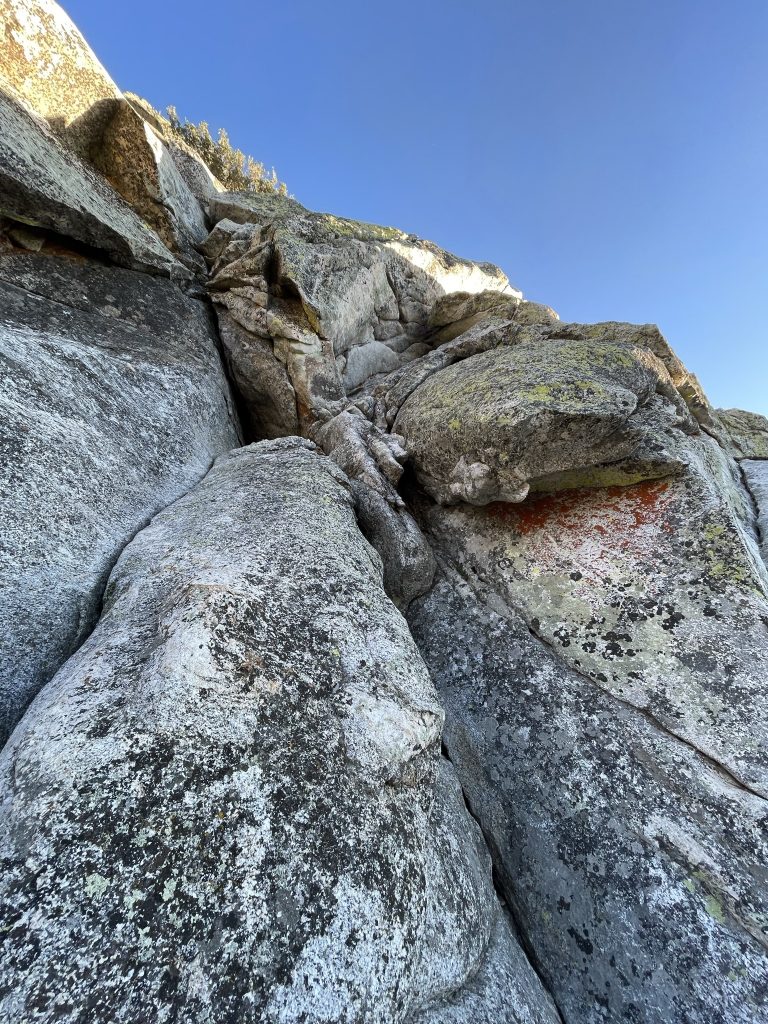
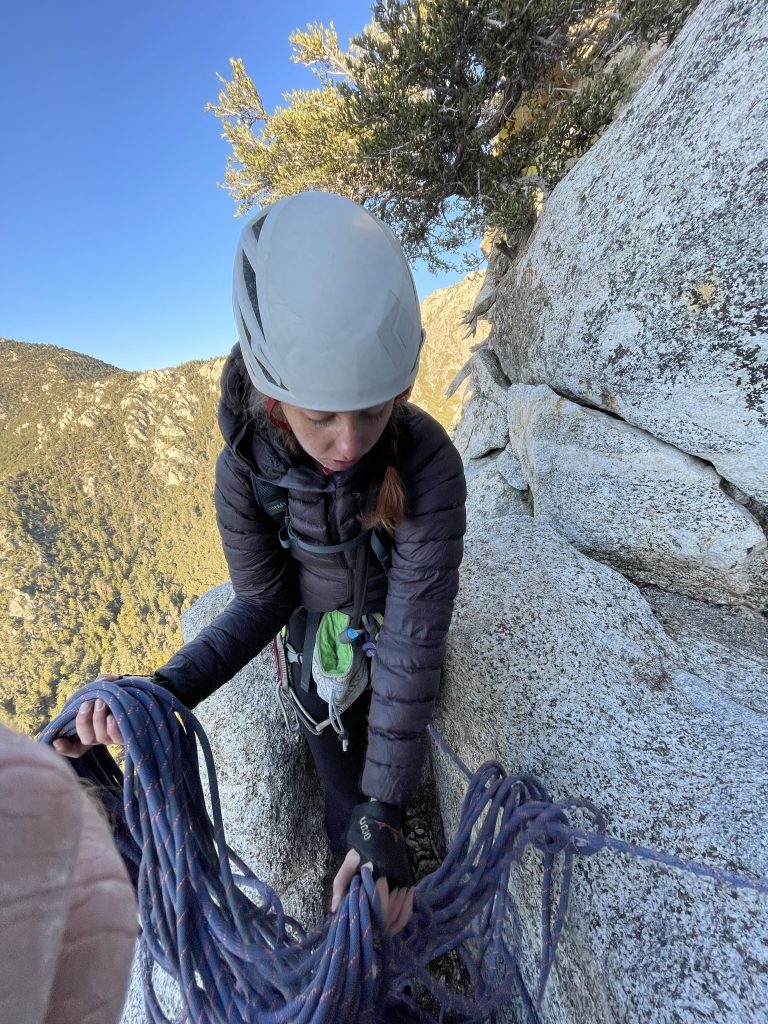
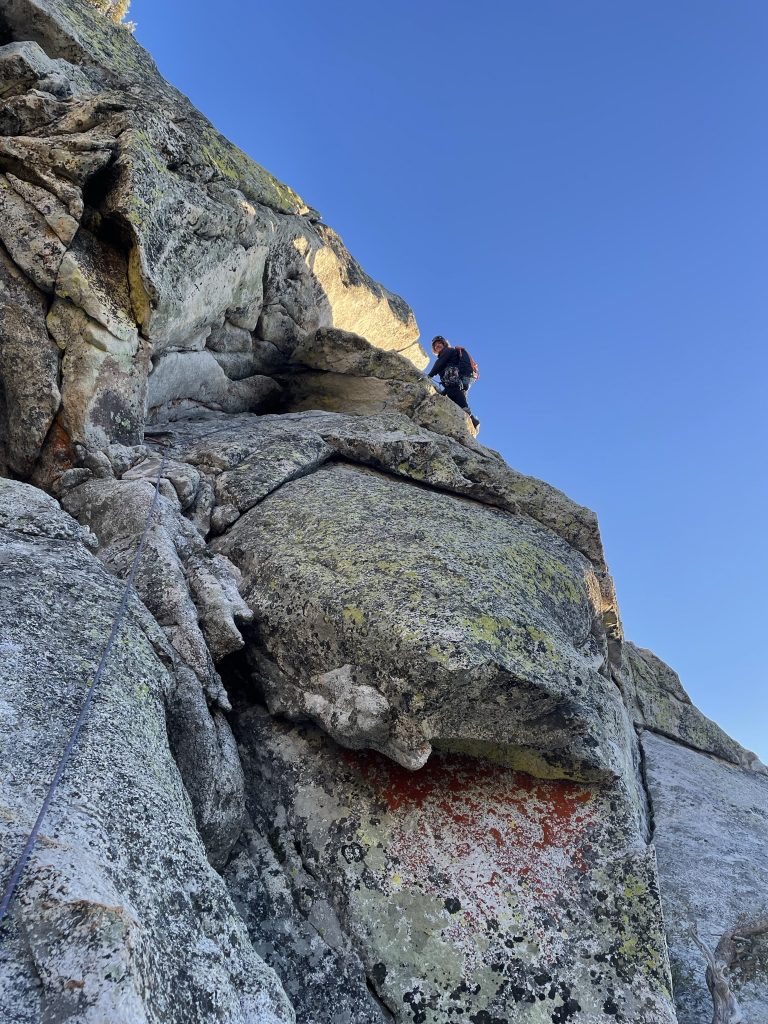
I slung a block and belayed Andrea up. We finished up just in time as the sun was near setting. We quickly scrambled up to the summit and then discussed our descent options. In the heat of figuring out all of the ascent details, we had actually failed to plan our descent very well. I knew of one option called the “Friction Descent” which involved class 4 down climbing and tricky route finding and was not aware of many others. In the dwindling light, we decided to make a run for it to see if we could locate the start. However, we only descended perhaps 20m below our top out section and quickly realized it was not going to be easy to locate nor route find in this light.
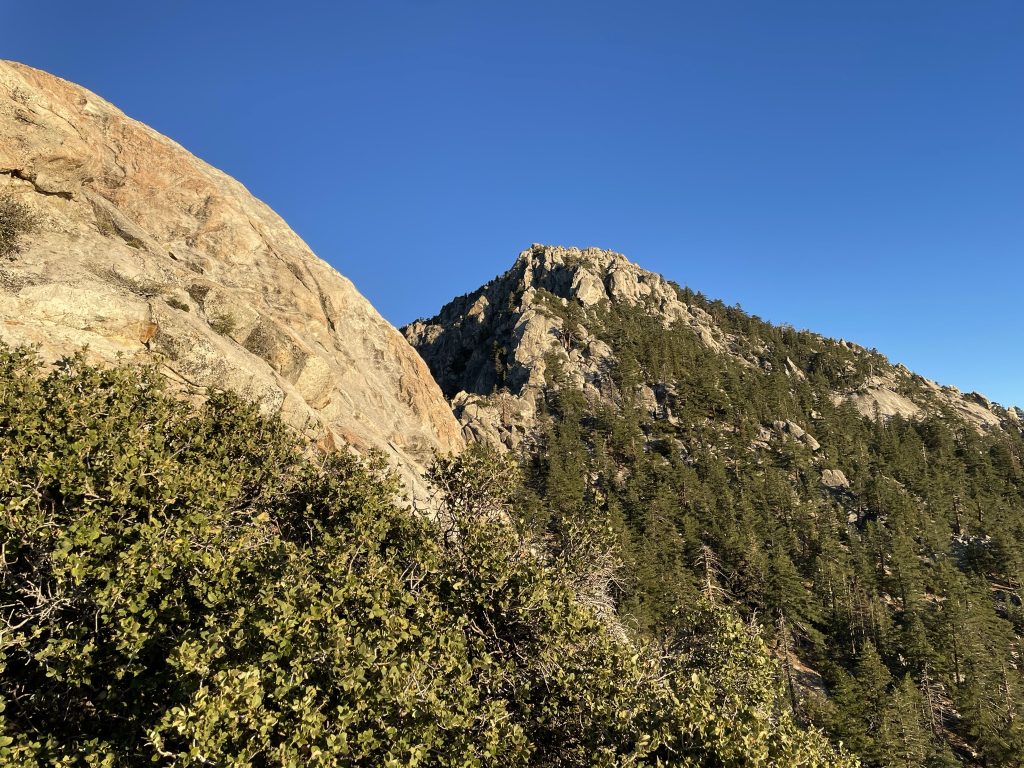
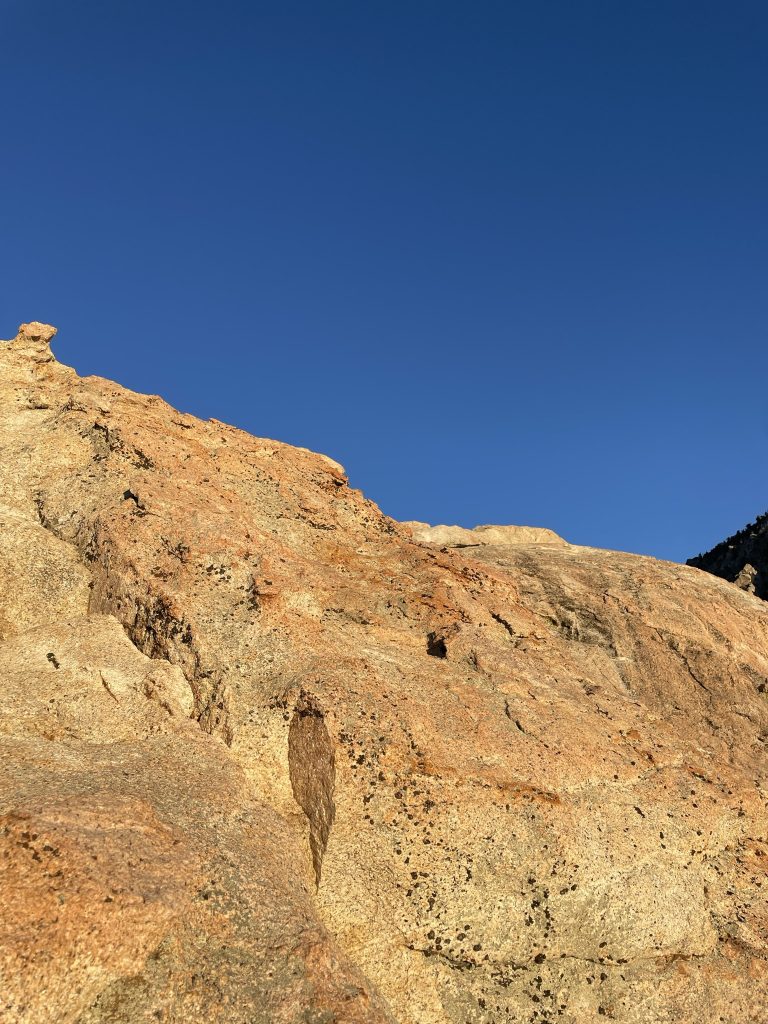
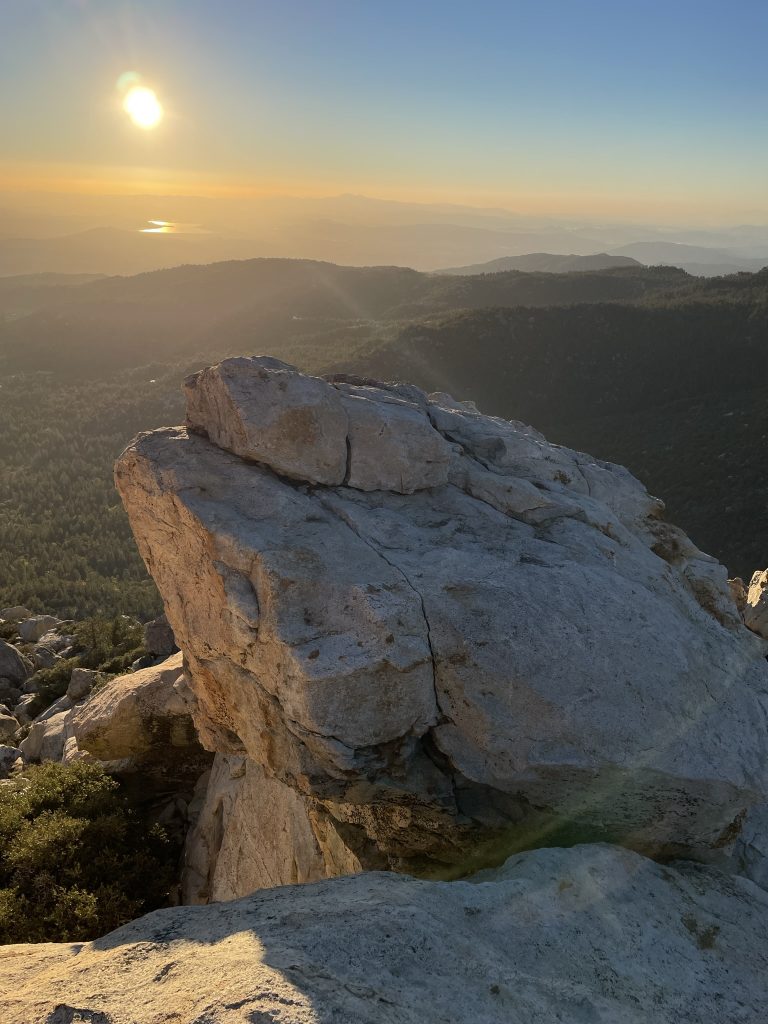
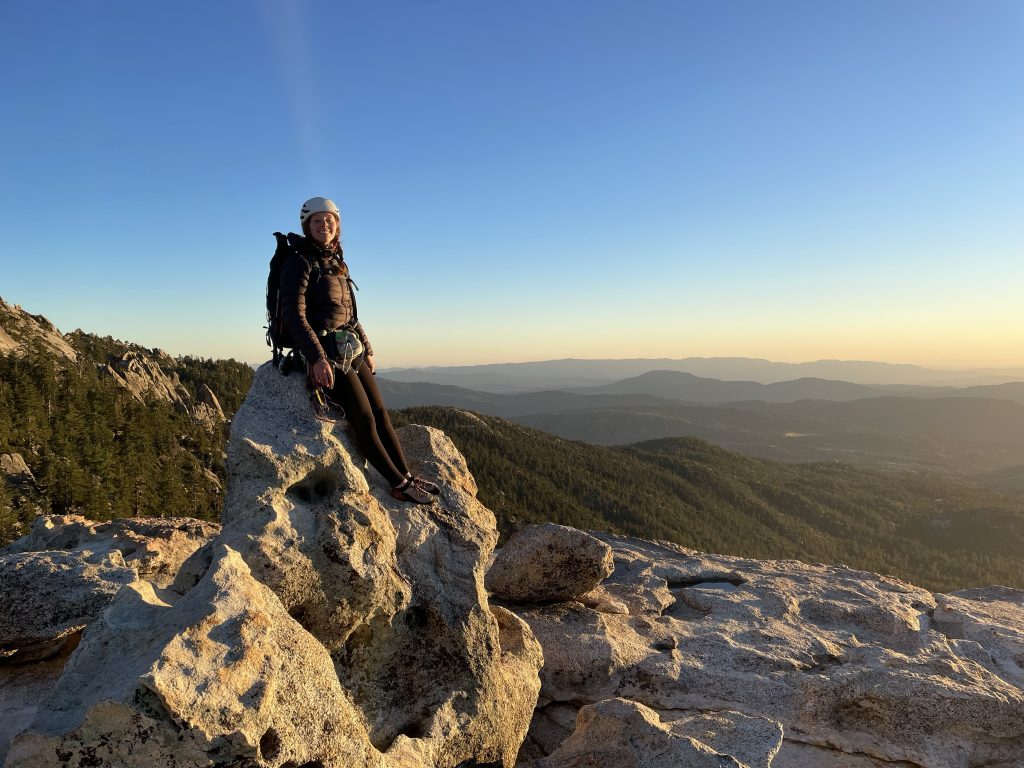
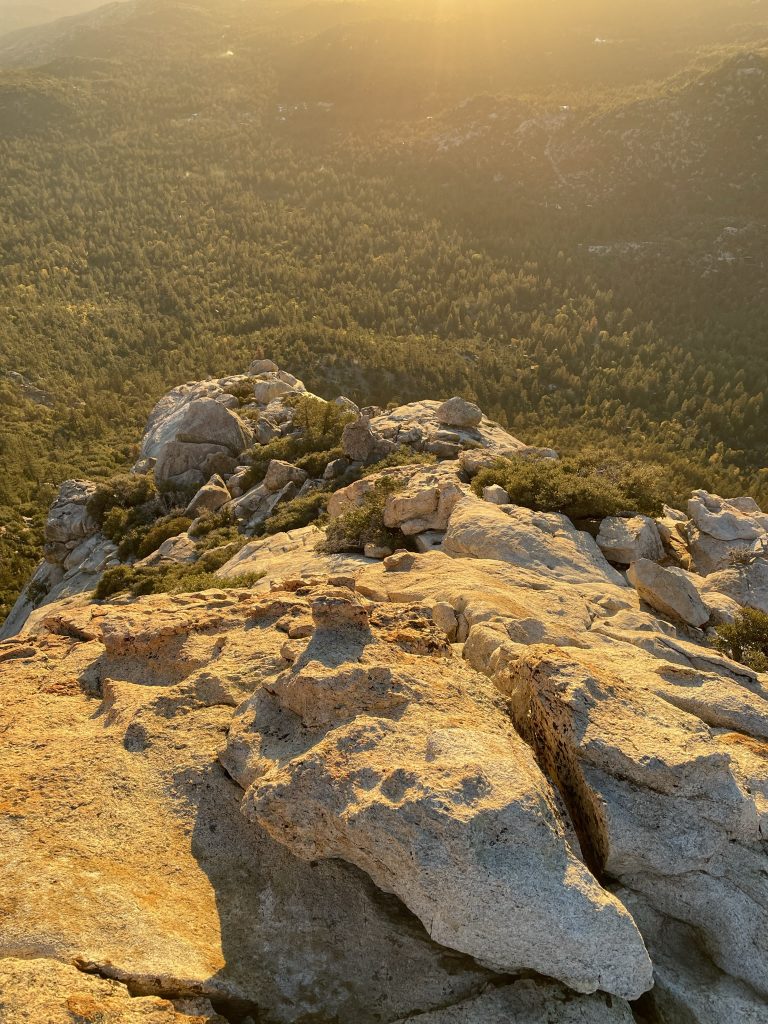
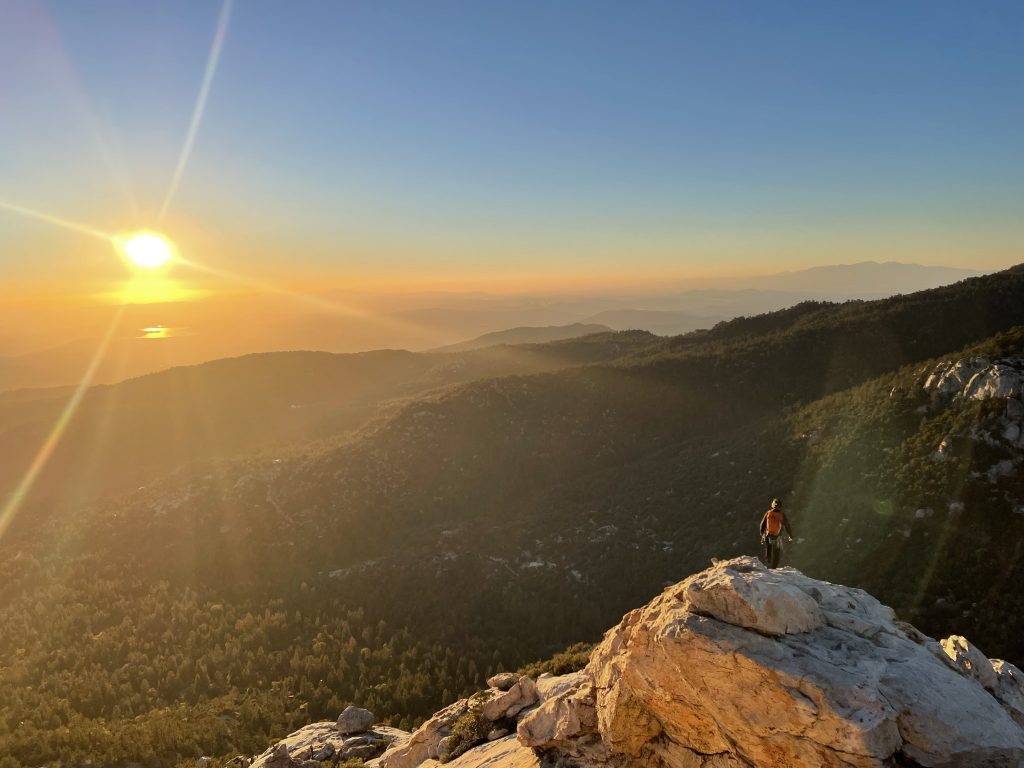
I made the call to bail on this descent option and we decided to try for the South gully which appeared to offer a tame descent when we saw it at the summit. Unfortunately, that meant scrambling all the way back up to the summit, but it was better than being stuck on contrived 4th class terrain in the dark. We reached the summit and found an easy path down to the col with Tahquitz Peak. From here we wandered down the forest through what appeared to be a path, but it wasn’t entirely clear. Thankfully, only 50m or so after we started our descent Andrea spotted cairns and an obvious path. A continuous line of cairns guided us all the way back down to the Ernie Maxwell trail in the now complete darkness. At last we reached the maintained trail and made the short walk back to the car.
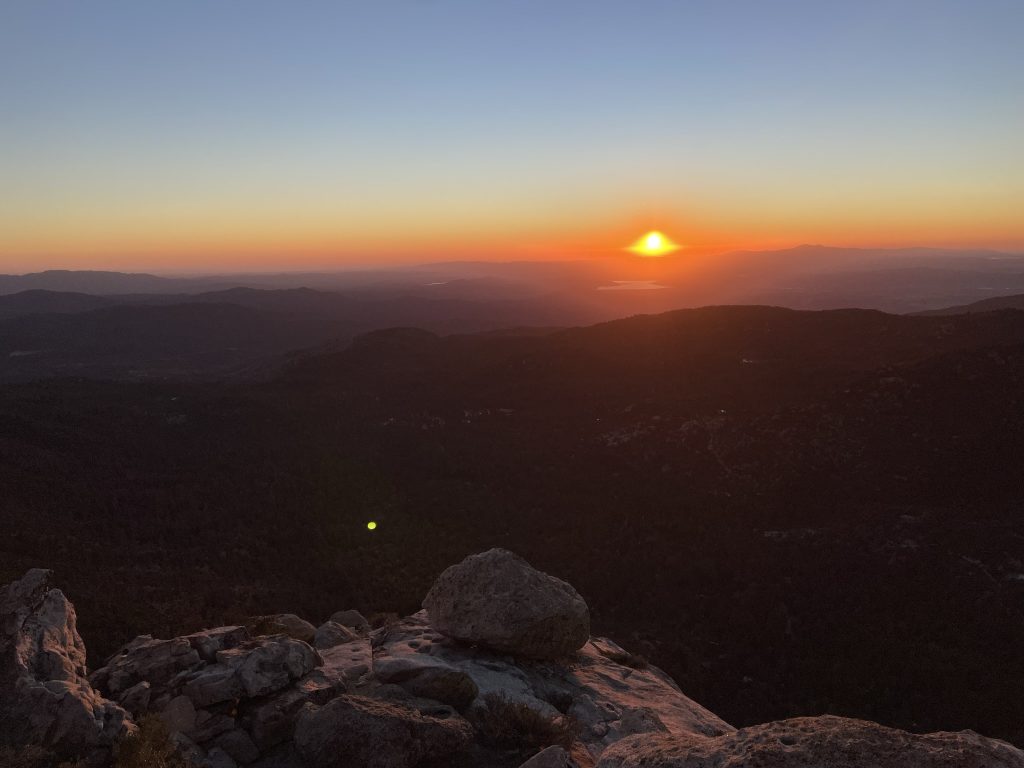
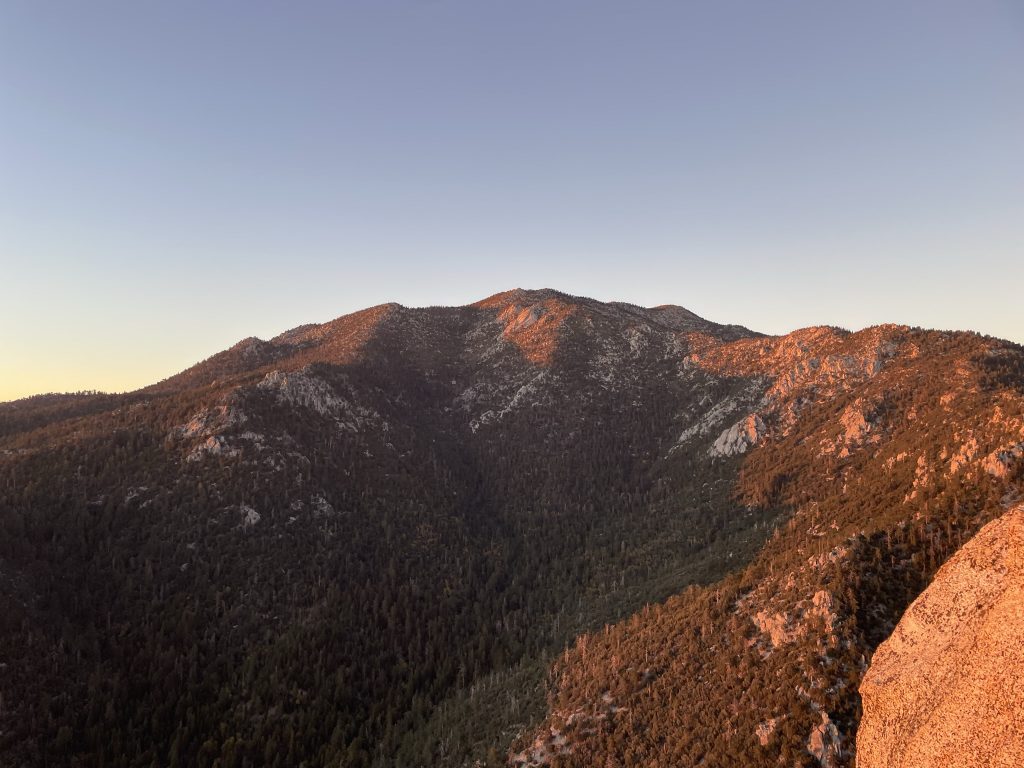
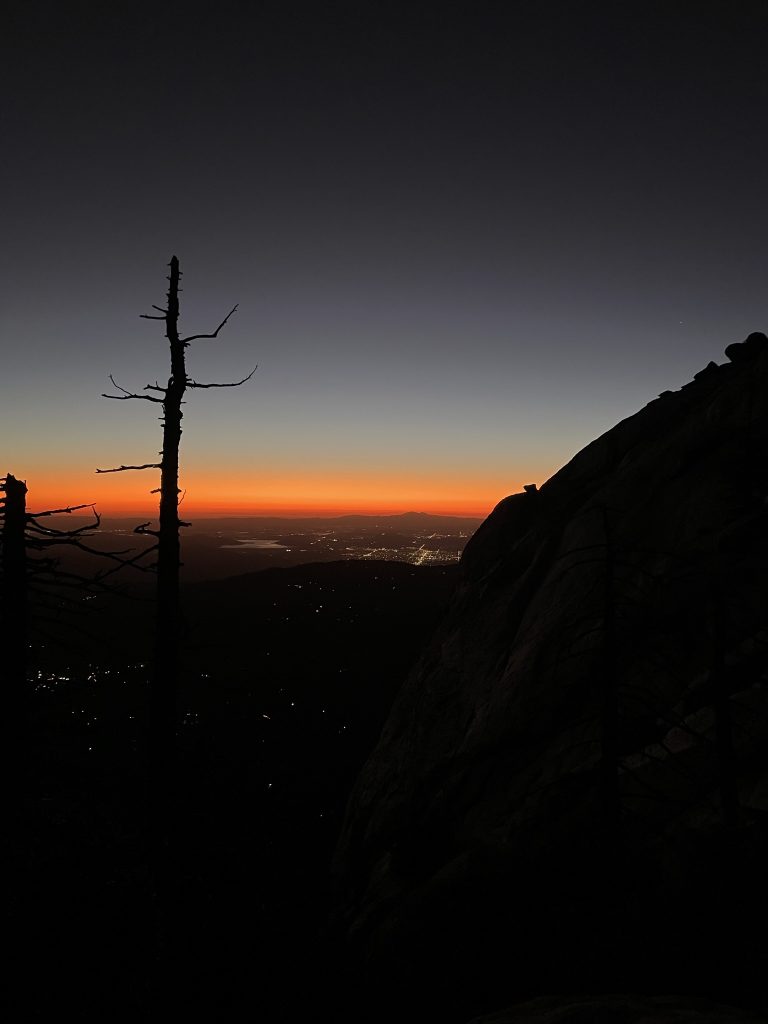
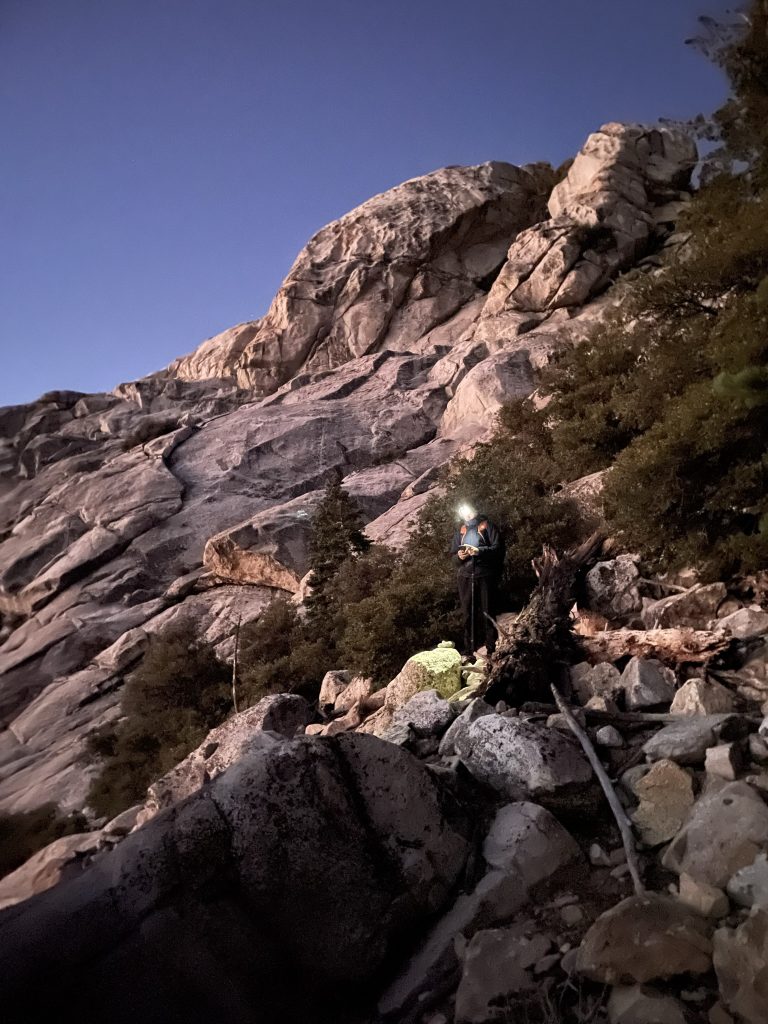
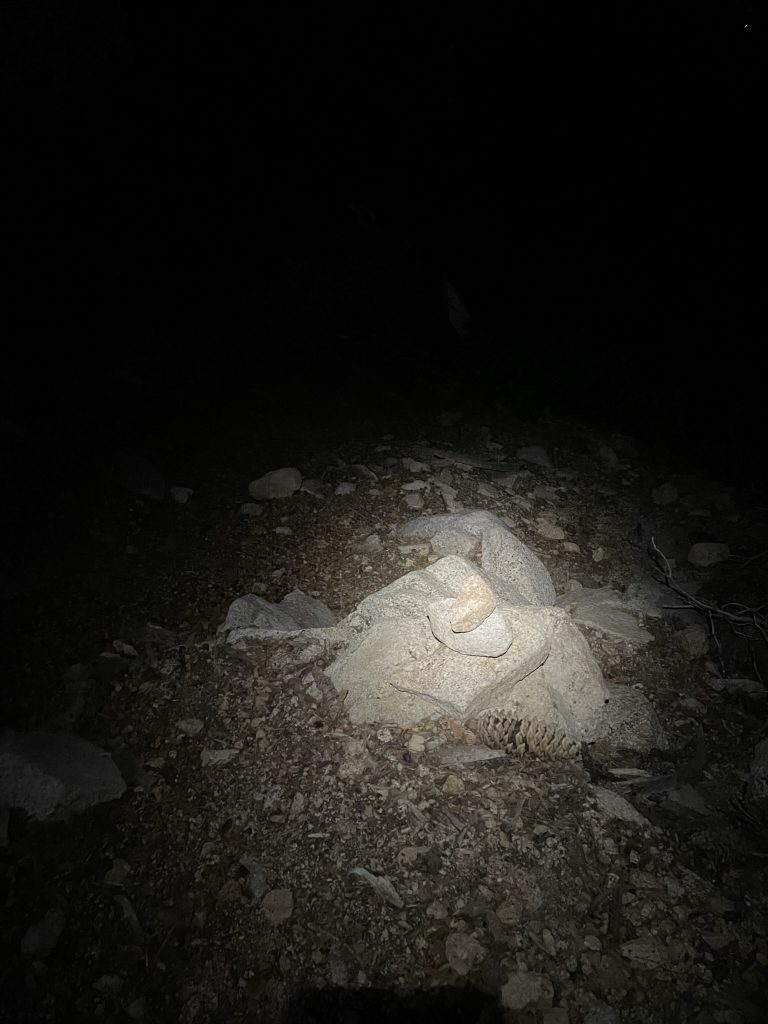
Despite the fun climbing the whole day felt like quite an ordeal on account of all the minor mishaps I had encountered. Andrea was once again a solid partner though, rescuing both my gear and morale on several occasions. The climbing itself was cool, but not particularly engaging. I think that’s because the odd number pitches were all lackluster and the even numbered pitches offered the more engaging and exposed climbing. Definitely still worth checking out to climb a piece of history, but wait for a warmer day or less climbers if you can.
